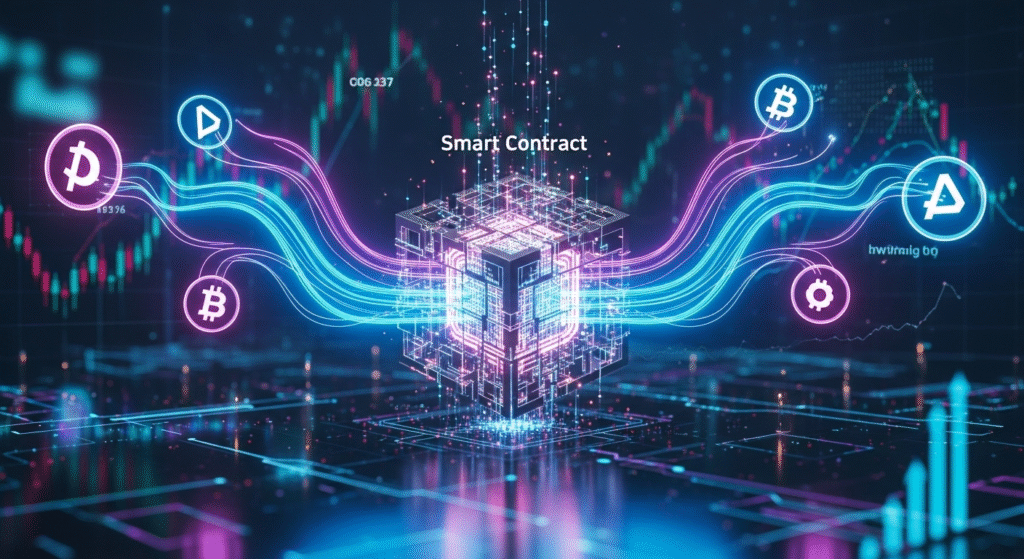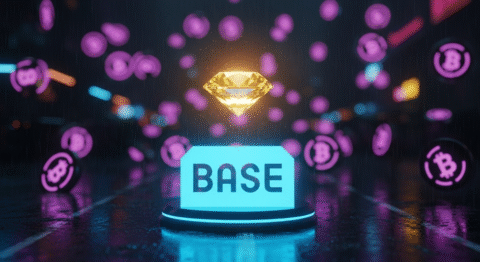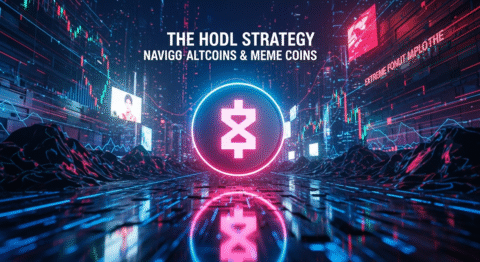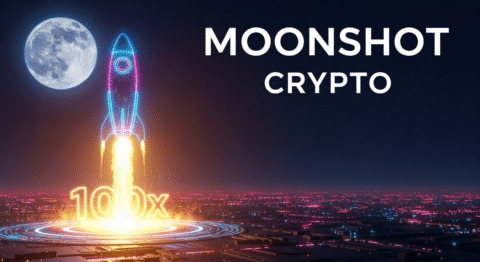Want to boost your altcoin gains? Discover 5 Smart Contracts secrets. Learn how to leverage them for crypto profits and unlock your portfolio’s full potential today!
Has the recent surge in altcoins and meme coins left you wondering about the underlying technology driving these explosive markets? Are you looking for a way to capitalize on the next big wave of decentralized innovation, beyond just riding the hype train? What if you could tap into the very engine that powers these digital assets, unlocking predictable returns and mitigating risks?
Crypto Market Overview
The cryptocurrency market, a dynamic and ever-evolving landscape, continues to be a hotbed of activity, with altcoins and meme coins frequently stealing the spotlight from their more established counterparts. We’ve witnessed periods of irrational exuberance fueled by social media trends, leading to unprecedented price surges for assets like Dogecoin and Shiba Inu. Conversely, the broader altcoin market has shown increasing sophistication, with projects leveraging advanced blockchain technology to solve real-world problems.
The Core Concept: How Smart Contracts Actually Work
At the heart of many altcoin projects, meme coins, and airdrop mechanisms lie Smart Contracts. They are the invisible architects of much of the decentralized world we are increasingly interacting with. But what exactly are they, and how do they function to create value and facilitate transactions?
What Are Altcoins / Meme Coins / Airdrops?
Before we delve into the specifics of Smart Contracts, it’s essential to clarify the terminology.
- Altcoins: This refers to any cryptocurrency other than Bitcoin. The vast majority of the cryptocurrency market consists of altcoins, each with its own unique features, use cases, and technological underpinnings. They can range from utility tokens and security tokens to governance tokens and stablecoins. Many altcoins aim to improve upon Bitcoin’s limitations or explore entirely new applications of blockchain technology.
- Meme Coins: A sub-category of altcoins, meme coins are often created as a joke or based on internet memes. While their initial purpose might seem frivolous, some meme coins have garnered substantial communities and significant market capitalizations, driven largely by social media sentiment and speculative trading. Their value is often highly speculative and tied to community engagement rather than fundamental utility.
- Airdrops: These are a distribution method for new cryptocurrencies, where a certain amount of tokens are sent to many wallet addresses for free. Airdrops are typically used as a marketing strategy to promote a new coin or token, to reward existing holders of another cryptocurrency, or to incentivize specific user actions. The distribution of these tokens is almost always managed by Smart Contracts.

Key Components & Technologies
The functionality of altcoins and meme coins, and the mechanics of airdrops, are deeply rooted in blockchain technology and the sophisticated code that dictates their behavior: Smart Contracts.
- Blockchain Technology: The foundational layer for almost all altcoins. Blockchains are distributed, immutable ledgers that record transactions across many computers. This decentralization ensures transparency, security, and resistance to censorship.
- Smart Contracts: These are self-executing contracts with the terms of the agreement directly written into code. They run on the blockchain and automatically execute actions when predefined conditions are met. For instance, a Smart Contract could automatically release funds when a certain event occurs, or distribute tokens to specific wallets based on a set of rules. The most prominent platform for Smart Contracts is Ethereum, but other blockchains like Solana, Binance Smart Chain, and Cardano also support them.
- Token Standards: For tokens to function correctly within a blockchain ecosystem, they adhere to specific standards. For example, ERC-20 is a technical standard that most fungible tokens on the Ethereum blockchain follow, enabling interoperability and predictable contract interactions. Similar standards exist for non-fungible tokens (NFTs) like ERC-721. The design and implementation of these standards are handled by Smart Contracts.
The Data-Driven Perspective
Understanding the numbers behind altcoins, meme coins, and airdrops is paramount for making informed investment decisions. This data-driven approach helps us move beyond mere speculation and identify genuine opportunities.
Market Data & Trends
The altcoin market has witnessed exponential growth over the past few years. Data from CoinMarketCap and similar platforms consistently show that altcoins, as a collective, often outperform Bitcoin in bullish market cycles. For example, during the 2021 bull run, many altcoins saw gains of over 1000%, significantly outpacing Bitcoin’s impressive, yet comparatively more modest, rally.
Meme coins, while more volatile, have also demonstrated incredible, albeit often short-lived, upward price movements. Their growth is heavily influenced by social media trends and community sentiment, which can be tracked through metrics like social media mentions, Telegram group sizes, and Twitter engagement. Airdrops, on the other hand, provide an early indicator of project interest. The number of participants in a particular airdrop, or the number of wallets claiming tokens, can signal the potential demand for a new project. Analyzing the historical success of airdrops from similar projects can provide valuable insights into the potential future performance of the distributed tokens.
Tokenomics & Market Health
The “tokenomics” of an altcoin or meme coin – its economic design, including supply, distribution, and utility – is a critical factor in its long-term viability and potential for gains.
- Supply: A fixed supply can create scarcity, potentially driving up prices if demand increases. Conversely, an inflationary model with an unlimited or rapidly increasing supply can dilute value. For altcoins and meme coins, understanding the total supply, circulating supply, and any vesting schedules for tokens held by the founding team or early investors is crucial.
- Demand Drivers: Genuine utility is the most sustainable driver of demand. Projects that solve a problem, offer a unique service, or build a strong ecosystem tend to have more resilient demand. For meme coins, community engagement and speculative interest are the primary demand drivers, making their value highly susceptible to shifts in sentiment.
- Distribution: How tokens are distributed at launch and over time can significantly impact market dynamics. Fairer distribution models, often facilitated by well-designed Smart Contracts for ICOs or airdrops, can lead to broader community ownership and potentially more stable prices. Concentrated ownership, where a few wallets hold a large percentage of tokens, can lead to pump-and-dump scenarios.
For example, a token with a limited supply, clear use case, and a community-driven distribution model managed through secure Smart Contracts indicates a healthier project than a coin with an unlimited supply, no clear utility, and tokens concentrated in a few hands.
Risks, Challenges & Competition
While the allure of altcoin gains is undeniable, it’s imperative to approach the market with a clear understanding of the inherent risks and challenges.
Risks of Altcoins and Meme Coins
- Volatility: Altcoins and meme coins are notoriously volatile. Prices can swing dramatically in short periods, leading to significant losses for unprepared investors. This volatility is often amplified by their smaller market capitalizations compared to Bitcoin.
- Security Vulnerabilities: Smart Contracts, while powerful, are not infallible. Bugs or exploits in the code can lead to the draining of funds, a risk particularly amplified in less audited or newer projects. Many rug pulls (scams where developers abandon a project and run away with investors’ funds) are facilitated by vulnerabilities in either the Smart Contract itself or the way it’s integrated into the project’s ecosystem.
- Regulatory Uncertainty: The regulatory landscape for cryptocurrencies, especially altcoins and newer tokens, is still evolving. Governments worldwide are grappling with how to classify and regulate these assets, which can create uncertainty and impact market stability.
- Market Manipulation: Due to their often lower liquidity and smaller market caps, altcoins and meme coins can be more susceptible to market manipulation, such as pump-and-dump schemes.
How Does Smart Contract Utilization Stack Up Against Competitors?
When we talk about “competitors” in this context, we’re often referring to alternative strategies for generating passive income or capital appreciation within the crypto space, or even more traditional investment avenues.
| Feature/Strategy | Smart Contract-Driven Altcoin Gains | Traditional Stocks/Bonds | Centralized Lending Platforms |
|---|---|---|---|
| Potential Returns | Very High (can be exponential, but also high risk of loss) | Moderate to High (historically stable, can offer growth) | Moderate (typically lower than high-risk altcoins, but more predictable) |
| Accessibility | High (requires a wallet and understanding of DeFi, but generally open to anyone) | High (requires brokerage accounts, KYC, and often geographic limitations) | High (requires account creation and KYC, often with geographic limitations) |
| Complexity | Moderate to High (understanding of Smart Contracts, blockchain, and tokenomics required) | Moderate (understanding of financial markets and company analysis required) | Low to Moderate (requires understanding of platform terms and risks) |
| Risk Level | Very High (volatility, smart contract risk, regulatory uncertainty, market manipulation) | Moderate (market risk, company-specific risk) | Moderate to High (platform risk, counterparty risk, smart contract risk for DeFi platforms) |
| Decentralization | High (transactions and logic executed on a decentralized network) | Low (companies and exchanges are centralized entities) | Low to Moderate (platforms are centralized, but some offer DeFi integrations) |
| Transparency | High (transactions recorded on a public ledger, coded logic is often open-source) | Moderate (company financial reports are public, but internal operations private) | Low (operations are typically internal to the platform) |
| Innovation Potential | Extremely High (enables novel financial instruments and decentralized applications) | Moderate (innovation occurs within established frameworks) | Moderate (innovation constrained by existing financial structures) |
| Yield Generation | Varies (staking, liquidity provision, yield farming, designed in Smart Contracts) | Dividends, interest payments | Interest accrual |
Smart Contracts offer a unique blend of high potential returns, decentralization, and innovation that traditional finance often struggles to match. However, this comes at the cost of significantly higher risk and complexity. The key is to leverage the power of Smart Contracts with an informed and cautious approach.
The Future Outlook
What’s Next for Altcoins / Meme Coins / Airdrops?
The trajectory of altcoins, meme coins, and airdrops is inextricably linked to the continued evolution of blockchain technology and the adoption of decentralized applications (dApps).
- Increased Sophistication of Smart Contracts: We can expect to see more advanced and secure Smart Contracts being developed, enabling complex financial instruments and automating a wider range of processes. This includes layer-2 scaling solutions that make Smart Contracts faster and cheaper to execute, thereby increasing their utility.
- Utility-Driven Altcoins: While meme coins may continue to capture attention through viral trends, the long-term growth in the altcoin sector is likely to be driven by projects with genuine utility. These are coins that leverage Smart Contracts to provide solutions in areas like supply chain management, decentralized finance (DeFi), gaming, and digital identity.
- Regulated Airdrops and Token Generation Events (TGEs): As the regulatory landscape clarifies, we may see more structured and potentially regulated airdrop mechanisms. This could involve Smart Contracts that ensure compliance with securities laws, making these distributions more robust and less prone to manipulation.
- Integration with Real-World Assets: The future will likely see Smart Contracts facilitating the tokenization of real-world assets, such as real estate, art, and commodities. This will open up new investment opportunities and further blur the lines between traditional finance and the crypto world.
The ability of Smart Contracts to automate processes, ensure fair distribution, and create novel financial products positions them as central to the future growth of the altcoin market.
Conclusion
In our journey through the world of altcoins and the power of Smart Contracts, we’ve unearthed five crucial secrets for boosting your potential gains. From understanding the fundamental mechanics of these digital assets and the groundbreaking technology of Smart Contracts to analyzing market data and navigating the inherent risks, a clear and informed approach is paramount.
The future of cryptocurrency is being written with code, and astute investors who grasp the capabilities and intricacies of systems powered by Smart Contracts will undoubtedly be better positioned to capitalize on emerging opportunities. Remember, due diligence, continuous learning, and a healthy dose of caution are your most valuable tools.
What are your thoughts on the role of Smart Contracts in altcoin gains? Which altcoins or meme coins have caught your eye recently? Share your insights in the comments below! And if you want to stay ahead of the curve in the ever-changing crypto landscape, be sure to subscribe for more in-depth analysis and actionable strategies.
FAQs
What is the most important aspect of a Smart Contract for altcoin gains?
The most important aspect is security and auditability. A flawed or un-audited Smart Contract can lead to the loss of all associated funds, negating any potential for gains. For altcoin gains, efficient and fair distribution mechanisms encoded within Smart Contracts are also critical.
Are all altcoins built on Smart Contracts?
No, not all altcoins rely on Smart Contracts in the same way. Some blockchains are built for specific functionalities and may not extensively use self-executing contracts. However, many popular altcoins, particularly those in the DeFi and NFT space, are heavily reliant on Smart Contract functionality to operate.
How can I identify altcoins with well-designed Smart Contracts?
Look for projects that have their Smart Contract code publicly audited by reputable third-party security firms. Check for open-source code repositories (like GitHub) where developers are transparent about their code. Also, consider if the tokenomics are clear and if the distribution mechanisms are fair and documented.
What are the risks of investing in altcoins based on meme coins?
Investing in meme coins is highly speculative. Their value is primarily driven by social media hype rather than intrinsic utility, making them extremely volatile and susceptible to rapid price crashes. The Smart Contracts governing them might also be less robust due to hasty development.
Can Smart Contracts guarantee profits?
No, Smart Contracts themselves do not guarantee profits. They are tools that automate agreements and execute actions based on predefined conditions. While they can facilitate profitable strategies like staking or yield farming, the success of these strategies depends on market conditions and the underlying project’s performance. The risk of loss is always present in cryptocurrency investments.## FAQs
What is the most important aspect of a Smart Contract for altcoin gains?
The most critical aspect of a Smart Contract for altcoin gains is its security and the fairness of its coded logic. A robust, audited Smart Contract ensures that token distributions, staking mechanisms, or other programmed functions operate as intended, without vulnerabilities that could lead to loss or manipulation. For instance, a Smart Contract managing an airdrop must accurately identify eligible recipients and distribute tokens without errors.
Are all altcoins built on Smart Contracts?
While many prominent altcoins leverage Smart Contracts extensively, not all are fundamentally built upon them. Altcoins represent a broad spectrum of cryptocurrencies that are alternatives to Bitcoin. Projects focused on specific blockchain architectures or functionalities might not rely on complex Smart Contract interactions. However, for decentralized finance (DeFi), non-fungible tokens (NFTs), and many innovative tokenomics models, Smart Contracts are the foundational technology.
How can I identify altcoins with well-designed Smart Contracts?
Identifying well-designed Smart Contracts involves due diligence. Look for projects that make their Smart Contract code publicly available (often on platforms like GitHub) and, more importantly, have undergone independent security audits by reputable third-party firms. Red flags include un-audited code, frequently changing contract parameters after deployment, or Smart Contracts with hidden administrative functions that could be exploited.
What are the risks of investing in altcoins based on meme coins?
Investing in meme coins carries significant risks due to their inherent volatility and speculative nature. Their value is often driven by social media trends and community sentiment rather than underlying utility, making price movements highly unpredictable. Furthermore, the Smart Contracts governing meme coins might be less sophisticated or thoroughly tested, increasing the risk of bugs, exploits, or even deliberate “rug pulls” where developers abandon the project.
Can Smart Contracts guarantee profits?
No, Smart Contracts themselves do not guarantee profits. They are self-executing agreements that automate the terms of a contract. While they can be programmed to facilitate strategies like staking, liquidity provision, or efficient token distribution, the profitability of these activities ultimately depends on market conditions, the performance of the underlying cryptocurrency, and other external factors. Smart Contracts enable participation in these mechanisms, but they do not eliminate investment risk.






